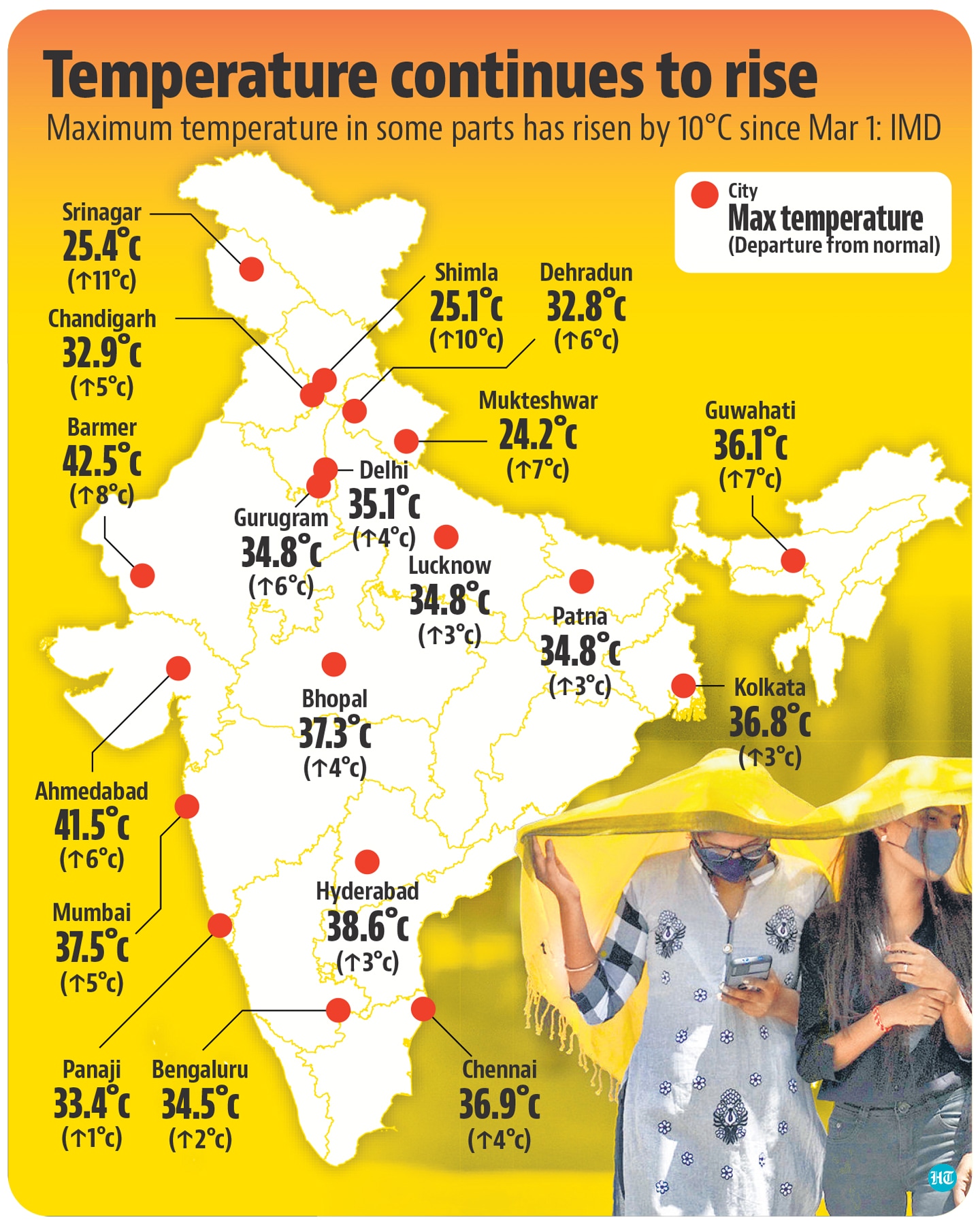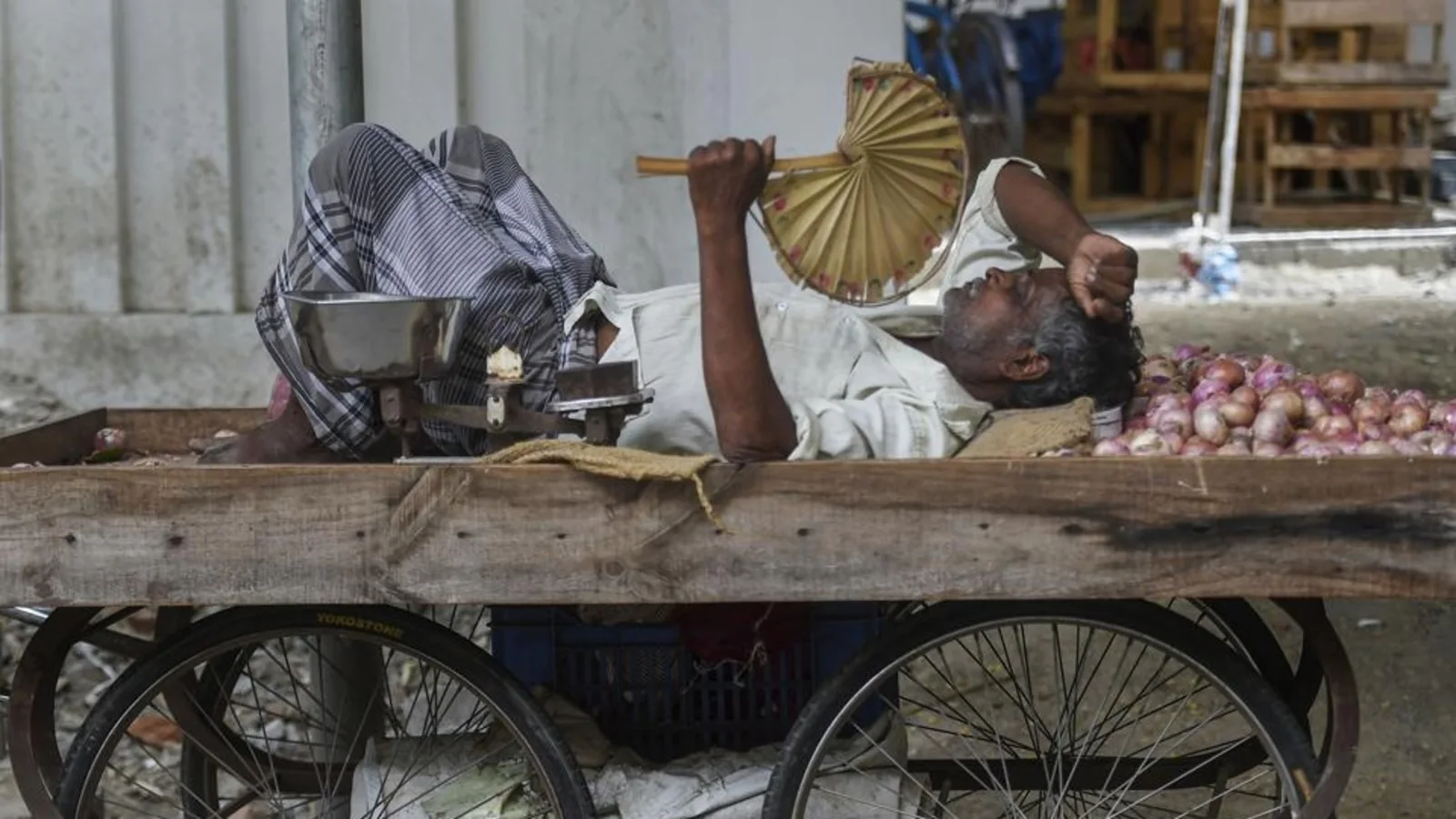[ad_1]
Hot winds continue to add to the rising mercury right from hill stations in the north to coastal parts, along with unusually high night temperatures, which, experts say, were similar to weather conditions observed in March-end or April first week.
According to the India Meteorological Department (IMD), maximum temperatures in parts of India have increased by at least 10°C since March 1 with several places in western India witnessing a jump of 6°C-8°C in the last four to five days.
Barmer and Jaisalmer in Rajasthan, Ahmedabad in Gujarat and Nagpur and Akola in Maharashtra have been witnessing temperatures in excess of 40°C for past two days while the mercury in Mumbai, Bhopal and Kolkata hovered close to 40°C.

In Delhi and neighbouring areas, the departure from normal temperature was 6°C-8°C, according to IMD data. On Wednesday, a ‘yellow alert’ for a heatwave in plains of Himachal Pradesh and Uttarakhand was issued. In these two hill states, the average deviation of maximum temperature from normal ranged between 6°C-10°C. Deviation from normal is not high in southern parts of India.
If the unusual heatwave-like conditions persist, agriculture experts say it could have adverse implications for farm production and lead to early ripening of wheat crop in food bowl states of Haryana and Punjab and damage horticulture crops such as mango and apple.
A heat wave is a weather condition when day temperature rises to a minimum of 40°C and there is a departure of 4.5°C- 6.4°C from normal temperature.
Also Read | IMD alert: Heatwave to persist in western India
“High temperature at this time is not good for wheat quality,” said a Punjab agriculture department official, adding that the farmers are being advised to get ready for early harvest if temperatures do not cool down. Farmers have already started harvesting crops such as mustard and gram.
Rajasthan’s joint director (agriculture) Ram Gopal Sharma said such a high temperature can impact wheat productivity by 5% to 15%. “Normally, such high temperature in April is good for wheat production. Such temperatures can create low pressure leading to rainfall in March-end or April, damaging the standing crop,” he said.
“Most crops in Maharashtra are almost at maturity, so the ongoing heat wave will not have much agricultural impact. Only wheat and some orchard crops such as mango and cashew may be adversely affected, but that can be mitigated by increasing irrigation,” said Kripan Ghosh, scientist with the IMD’s agromet division in Pune.
A Himachal government official said the hot weather can adversely impact the flowering season for horticulture crops such as pears, plums and apple, especially in the lower and middle belts of the crop region. “Fortunately, because of longer and colder winter, the flower season has been delayed. If the present weather continues, the risk of flower burning is high,” the official added.
Mahesh Palawat of Skymet Weather explained that absence of northwesterly winds that usually cool the plains of central and western India and pre-dominance of anti-cyclonic winds over western parts of India are the cause for sudden rise in temperatures. “The north and north-westerly winds would take over the anti-cyclone winds in next 24-48 hours which could cool the temperature by a few degrees,” he said.
KG Ramesh, IMD’s former director-general, said the quick change of temperature, with spring being missed, is another example of climate change impacting weather patterns.
For Mumbai, which witnessed a “severe” heat wave on Monday with mercury rising to 39.6°C, KS Hosalikar, scientist (surface instrument division) at IMD Pune, said this was “not unusual”. A total of 11 cities in Rajasthan recorded 40-plus temperatures on Wednesday with Barmer being the hottest at 42.9°C and Jaisalmer second with 42°C. Goa experienced heatwave-like conditions with temperatures ranging from 4°-5° above normal.
(With inputs from state bureaus)
[ad_2]
Source link

